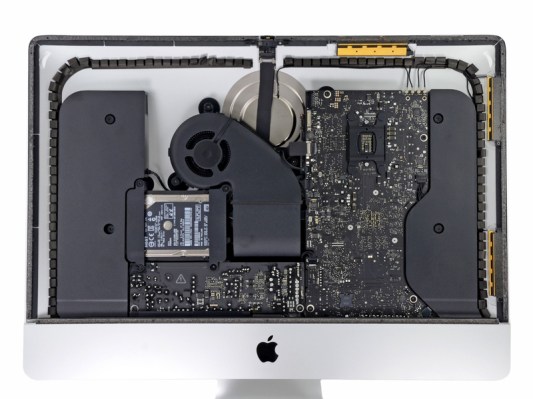As you might have expected, the new iMac redesign that introduces a much slimmer case also has some negative consequences for overall device repairability and DIY upgrades, iFixit’s teardown of the machine has revealed. The site’s traditional peek under the hood of Apple’s latest all-in-one also shows off some impressive feats of engineering to fit all that good stuff in a much sleeker package.
In good news, RAM, hard drive and CPU are all possible to replace, should things go wrong or should users want to upgrade their memory or internal storage. The bad news, though, is that unlike on previous generation iMacs, none of these pieces are easily accessible. iMacs used to at least have user-accessible RAM trays on the underside of their face, which actually made it really easy to swap out upgrades. Now, while it’s still not soldered to the motherboard like on the latest Retina MacBook Pros and MacBook Airs, getting at the RAM requires removing the screen, and also behind the logic board, meaning you’ll have to essentially take the iMac completely apart to change things up.
In better news, the iMac packs some engineering changes that will help with user experience, including dual microphones to make FaceTime calling and general audio input without mics better overall. And iFixit says that the friction stir welding used to combine case pieces together isn’t just marketing smoke; it should create strengthened welds without traditional weak spots due to areas that are completely melted and reformed. Apple has also moved from three fans to just one, which is located near the iMac’s rear back bulge (which is mostly accounted for by the iMac’s main Wi-Fi antenna), and saves a ton of space versus previous designs.
Be sure to check out the entire teardown if you’re after the gritty details, but the main takeaway here might be that the iMac has seen a drop from a 7 out of 10 to a 2 out of 10 in terms of iFixit’s repairability score between generations. That’s not the best news for DIY-ers, but Apple is clearly of the opinion that the dramatic design changes more than make up for internal component accessibility sacrifices.
